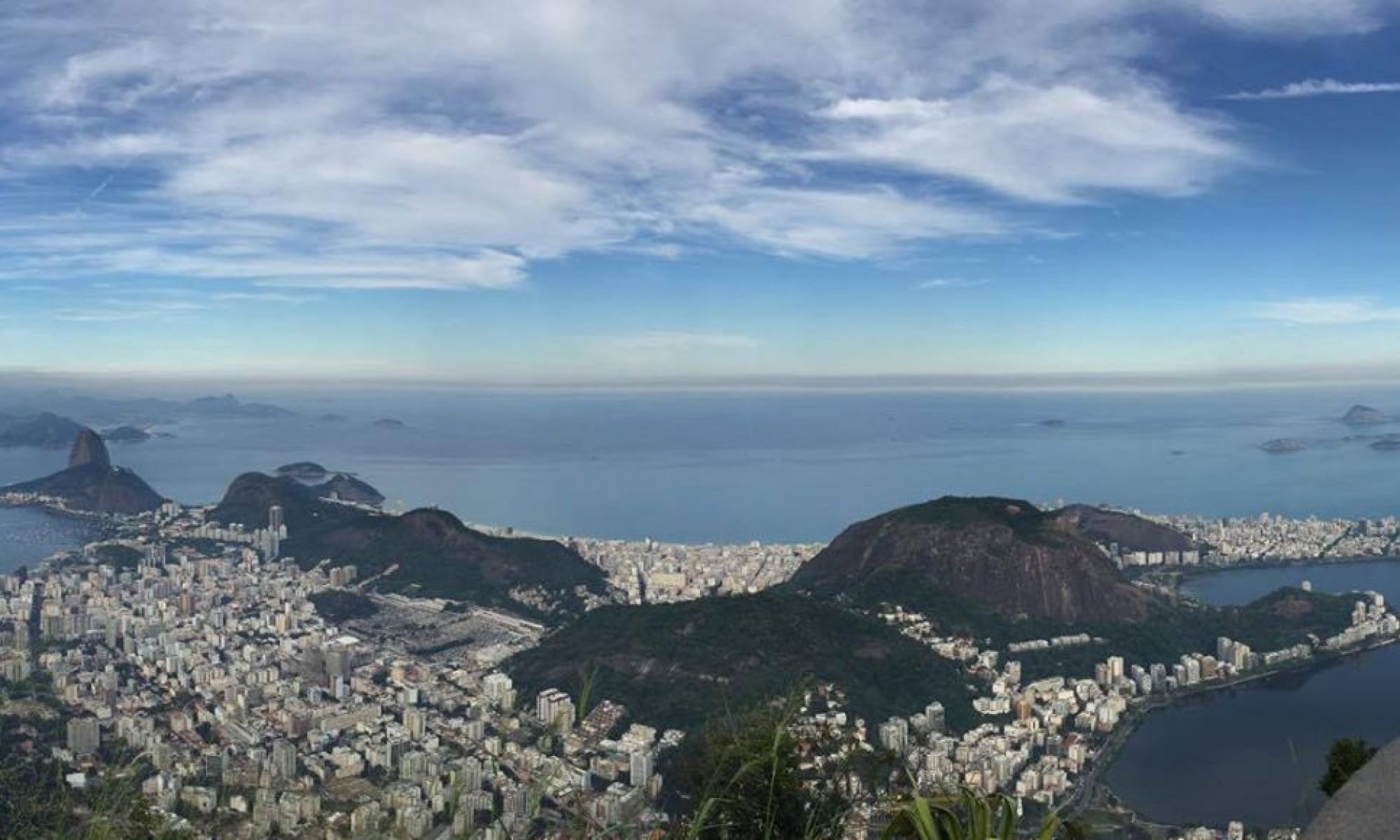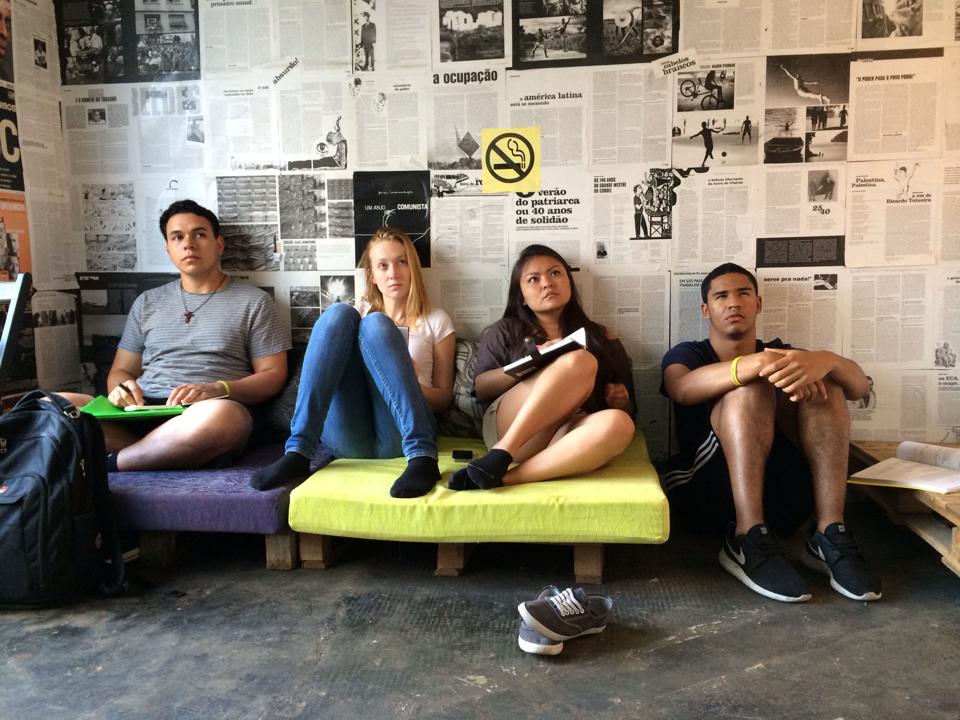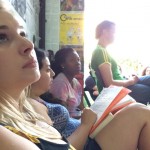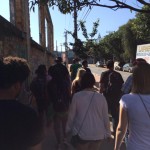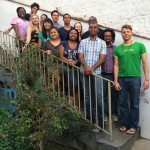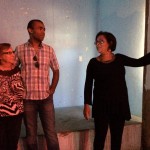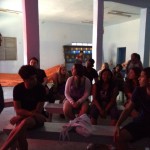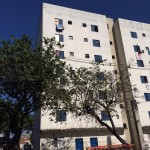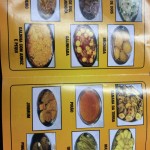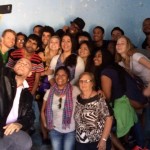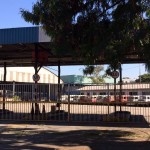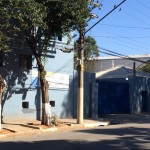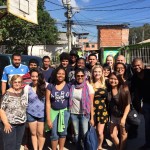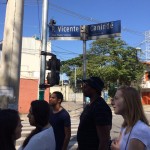June 6, 2015
By: Robert Hill
Our learning experiences for today started around 9:30 this morning as we traveled to the Canindé Community. This was the same community that the first Afro-Brazilian writer Carolina Maria De Jesus lived. She authored the novel, Child of the Dark (O Quarto do Despejo), which was a compilation of her journal entries into a book that represented life in the favela. De Jesus was a trash collector who walked the streets to collect paper to sell in order to create income. De Jesus’ novel was one of the bestselling novels in Brazil’s history, yet, De Jesus died extremely impoverished due to her radical and revolutionary ideas, which excluded her from many social circles. Her book was the nation’s first glimpse into the struggle of the people of the favela and was an inspiring narrative for thousands of Brazilians.
As soon as we arrived at our stop at the metro, we were greeted by Alan de Loiola Alves who is a Professor of Social Work at a university in São Paulo. He guided us down the stairs to meet his student, Angela, a woman who recently graduated with her degree in social work and was a part of the black power movement and urban development in the Black Community. The tour began as we followed the footsteps of the author Carolina Maria de Jesus. De Jesus would walk miles every day from the community where she lived to the metro area which was at least ten to fifteen city blocks away, sometimes even further. As we followed the footsteps of De Jesus, there was a sense of déjà vu, many of the same disadvantages and lack of assistance present in similar communities in Rio, were again present and detrimental to the livelihood of the people in São Paulo. As we walked these blocks to get to the community we saw at least five individual pockets of homeless communities and only one homeless shelter with limited space and strict guidelines for who can and cannot be serviced by them. This reminded me of the article The Right to the City by David Harvey, where he defines this term as “a right to change ourselves by changing the city. It is, moreover, a common rather than an individual right since this transformation inevitably depends upon the exercise of a collective power. . .” (Harvey, 2008:23). This definition was ever-present in my mind as I walked from the metro to the community because I couldn’t see how people from this area—even as a collective—had the power to change a city which allows for them to live in such conditions. Once in the favela this opinion changed drastically.
As we entered the favela, we walked into the Canindé Community center where we met Paulo Felipe and Neide, two members of Angela’s graduating class and fellow social workers in the community. They were accompanied by members of the community, one in particular who knew de Jesus personally as she watched her when she was a young girl. The center was a small blue building with sporadically placed chairs and a projector in the middle for Angela, Neide, and Paulo Felipe’s presentation. Before they started the presentation, they read a piece of de Jesus’ book aloud where she calls the favela the “trash room of São Paulo” and therefore sees herself as trash from the perspective of the Brazilian society. Donna M. Goldstein talks about this transitive mentality. She says “In addition to giving poor women . . . a concrete symbol of “making it” to grasp on to, these relations serve to create and sustain among the poor a vision of themselves as inferior.”(Goldstein, 2013: 69). A lot of people in the favelas use a transitive rationale for understanding themselves and the world around them. It’s the ideology that if this is how I live then this must be what I am. In the presentation, they talked about how de Jesus had numerous books but none as famous as her first. Also the treatment and living conditions of de Jesus were discussed. They told us specific stories where when she wanted water she had to clean the faucet because it was covered in feces and that one time when she asked for food she was given a box of dead rats.
Angela, Paulo-Felipe, and Neide continued their presentation by explaining the difference between a favela and community. The favelas were created around 1896 during a period of civil unrest. The poor population in Brazil was being misrepresented and therefore revolted against the government. Brazilians during this unrest created houses on the hills surrounding the city. They named these communities “favelas” because that was the plant that was on the hill when they were first colonized. Now with the negative connotations that are applied with the original name, the “favelas” are making the transition to “communities” because it implies that they are a collective of individuals with similar goals. This mindset led to the communities around the nation to start to organize and demand more polices instead of the charity that was given before. This name change shifted the paradigm of the community and instilled a sense of pride in the people that lived there. One of the major things that I took away from the presentation was when the community Center director Wilson said: “When you come back it will be better.” That statement made me realize that the community has a level of resilience that allows them to create change.
After leaving the favela, we had a small break and then a talk about higher education and racial violence in Brazil by Dr. Sales Augusto. He gave the group statistics that were really powerful which helped put the seriousness of the problem into perspective. For example, from 2002-2012, White homicides have decreased by 24.8%, while Black homicides have increased 38% in the same time span. Looking at this in terms of youth, the numbers are even worst. For Whites between the ages of 15-28 from 2002-2012, White homicides have decreased by 32.3% while Blacks in the same age range and time span have increased by 32.4%. Dr. Augusto attributes this to the education system and how the most educated people in Brazil’s society perpetuate stereotypes and dehumanize Blacks. In a video he showed and explained to us, it showed the former minister of Economics describing Black domestic workers as animals. He closed his discussion by saying the topic of Brazilian inequality needs to transition from a swept under the rug conversation to one that is spoken about by everyone in the country .
Today we were educated on a lot of the dehumanizing agents that people of color face in Brazil. Still, throughout these experiences, the residents have demonstrated a sense of pride and appreciation for everything that they have. This encourages me to continue to learn and to understand their situation, as well as to exemplify and emulate their extreme pride and resilience.
